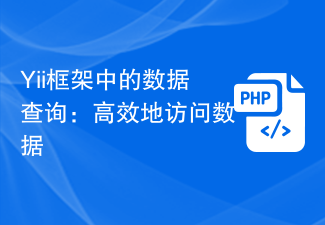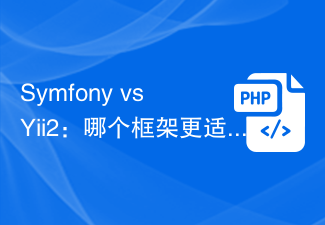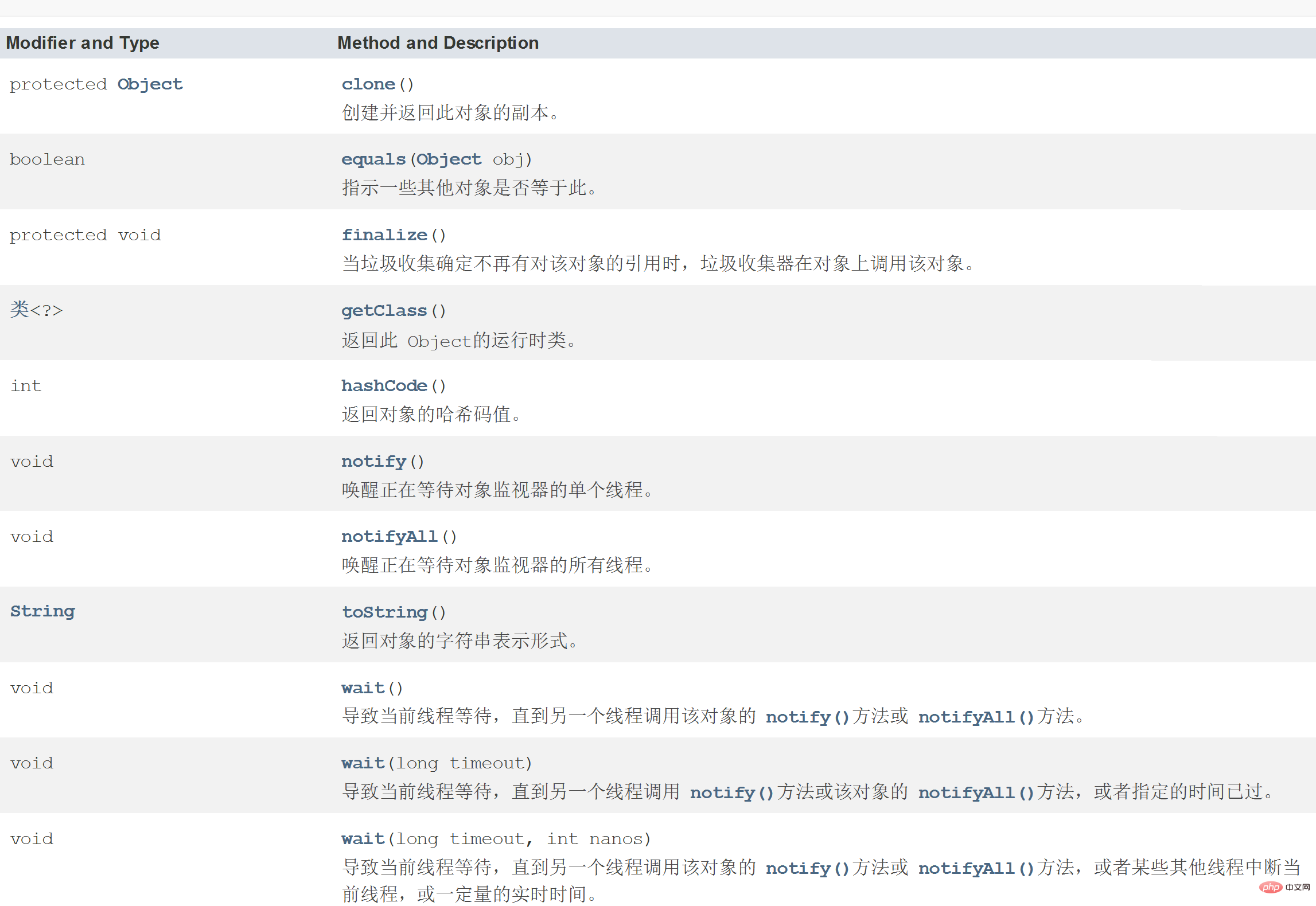Yii Basics
Attributes property
Attributes are used to represent the status of a class. From the perspective of access, there is no difference between attributes and member variables. However, member variables are a concept in terms of the structural composition of the class, while attributes are a concept in terms of the functional logic of the class
Q: What is the difference between attributes and member variables?
Member variables are an "internal" concept that reflect the structure of the class. Attribute is an "external" concept, reflecting the logical meaning of the class.
Member variables do not have read and write permission controls, while properties can be specified as read-only or write-only, or both read and write.
Member variables do not undergo any post-processing for reading and do not undergo any pre-processing for writing, while attributes do.
The public member variable can be regarded as a readable and writable property without any preprocessing or postprocessing. Since private member variables are not visible from the outside and are inconsistent with the "external" characteristics of attributes, they cannot be regarded as attributes.
Although in most cases, attributes are represented by one or more member variables, there is no necessary correspondence between attributes and member variables. For example, the output attribute of the NAND gate does not have a so-called $output member. The variables correspond to it.
provides support for attributes by
yiibaseObject
implementation of attributes
<code>class foo extends yii\base\object{
private $_title;
public function setTitle($title){
$this->_title = trim($title);
}
public function getTitle(){
return $this->_title;
}
}</code>
attributes can achieve better encapsulation of classes, while component entries and unified management of member variables.
However, __get(), __set() traverses all member variables and is called only when no matching member variable is found. Its efficiency is inherently lower than using member variables. In some simple situations where data structures, data collections, etc. are represented, and read-write control is not required, you can consider using member variables as attributes, which can improve efficiency.
The timing of automatically calling __get() __set() only occurs when accessing non-existing member variables. Therefore, if the member variable public $title is defined, then even if getTitle() setTitle() is defined, they will not be called. Because when $post->title, it will point directly to the public $title.
PHP is not case-sensitive for class methods, that is, it is not case-sensitive, and it is also case-insensitive for attribute names.
__get() __set() are all public,
staticmethods are not easy to use.
Component
Yii claims to be a component-based framework.
yiibaseComponent inherits from yiibaseObject. Component overloads the property methods in Object and also adds events and behaviors.
Since overloading adds events and behaviors, the performance of Component is slightly worse than that of Object.
Object configuration
Yii’s object configuration method is unified. The configuration of all objects is configured through __construct() in Object. The essence of configuration lies in Yii::configure(), which constructs properties by configuring arrays.
Q: What if the configuration is a multi-dimensional array?
Yii implements the specific processing of this array in
yiidiServiceLocator:setComponents.
Summary
Through yiibaseObject::__construct(), we can see that all objects, including the loading of Component properties, have 4 stages (the first three stages are integrated in one go).
Pre-initialization: The default definition of Property
Yii::configure()to load the configuration array, override the Propertyand then initialize:
init()executionclass method call stage.
Reference
http://www.digpage.com/
The above introduces Yii source code interpretation-attributes, including aspects of content. I hope it will be helpful to friends who are interested in PHP tutorials.
 title是什么意思Aug 04, 2023 am 11:18 AM
title是什么意思Aug 04, 2023 am 11:18 AMtitle是定义网页标题的意思,位于标签内,并且是在浏览器的标题栏中显示的文本,title对于网页的搜索引擎优化和用户体验都非常重要。在编写HTML网页时,应该注意使用相关的关键词和吸引人的描述来定义title元素,以便吸引更多的用户点击和浏览。
 Yii2 vs Phalcon:哪个框架更适合开发显卡渲染应用?Jun 19, 2023 am 08:09 AM
Yii2 vs Phalcon:哪个框架更适合开发显卡渲染应用?Jun 19, 2023 am 08:09 AM在当前信息时代,大数据、人工智能、云计算等技术已经成为了各大企业关注的热点。在这些技术中,显卡渲染技术作为一种高性能图形处理技术,受到了越来越多的关注。显卡渲染技术被广泛应用于游戏开发、影视特效、工程建模等领域。而对于开发者来说,选择一个适合自己项目的框架,是一个非常重要的决策。在当前的语言中,PHP是一种颇具活力的语言,一些优秀的PHP框架如Yii2、Ph
 php如何使用Yii3框架?May 31, 2023 pm 10:42 PM
php如何使用Yii3框架?May 31, 2023 pm 10:42 PM随着互联网的不断发展,Web应用程序开发的需求也越来越高。对于开发人员而言,开发应用程序需要一个稳定、高效、强大的框架,这样可以提高开发效率。Yii是一款领先的高性能PHP框架,它提供了丰富的特性和良好的性能。Yii3是Yii框架的下一代版本,它在Yii2的基础上进一步优化了性能和代码质量。在这篇文章中,我们将介绍如何使用Yii3框架来开发PHP应用程序。
 Yii框架中的数据查询:高效地访问数据Jun 21, 2023 am 11:22 AM
Yii框架中的数据查询:高效地访问数据Jun 21, 2023 am 11:22 AMYii框架是一个开源的PHPWeb应用程序框架,提供了众多的工具和组件,简化了Web应用程序开发的流程,其中数据查询是其中一个重要的组件之一。在Yii框架中,我们可以使用类似SQL的语法来访问数据库,从而高效地查询和操作数据。Yii框架的查询构建器主要包括以下几种类型:ActiveRecord查询、QueryBuilder查询、命令查询和原始SQL查询
 Symfony vs Yii2:哪个框架更适合开发大型Web应用?Jun 19, 2023 am 10:57 AM
Symfony vs Yii2:哪个框架更适合开发大型Web应用?Jun 19, 2023 am 10:57 AM随着Web应用需求的不断增长,开发者们在选择开发框架方面也越来越有选择的余地。Symfony和Yii2是两个备受欢迎的PHP框架,它们都具有强大的功能和性能,但在面对需要开发大型Web应用时,哪个框架更适合呢?接下来我们将对Symphony和Yii2进行比较分析,以帮助你更好地进行选择。基本概述Symphony是一个由PHP编写的开源Web应用框架,它是建立
 java Object转byte与byte转Object的方法是什么Apr 20, 2023 am 11:37 AM
java Object转byte与byte转Object的方法是什么Apr 20, 2023 am 11:37 AMObject转byte与byte转Object今天实现一下如何从Object去转为byte和如何从byte转为Object。首先,定义一个类student:packagecom.byteToObject;importjava.io.Serializable;publicclassstudentimplementsSerializable{privateintsid;privateStringname;publicintgetSid(){returnsid;}publicvoidsetSid(in
 HTML中title的含义是什么Mar 06, 2024 am 09:53 AM
HTML中title的含义是什么Mar 06, 2024 am 09:53 AMHTML中的title显示的是网页标题标签,可以让浏览者知道当前页面的主要是讲什么的,所以每个网页都应该有一个单独的title。
 Java Object类中的方法怎么用Apr 18, 2023 pm 06:13 PM
Java Object类中的方法怎么用Apr 18, 2023 pm 06:13 PM1.Object类介绍Object是Java默认提供的一个类。Java里面除了Object类,所有的类都是存在继承关系的。默认会继承Object父类。即所有类的对象都可以使用Object的引用进行接收。范例:使用Object接收所有类的对象classPerson{}classStudent{}publicclassTest{publicstaticvoidmain(String[]args){function(newPerson());function(newStudent());}public


Hot AI Tools

Undresser.AI Undress
AI-powered app for creating realistic nude photos

AI Clothes Remover
Online AI tool for removing clothes from photos.

Undress AI Tool
Undress images for free

Clothoff.io
AI clothes remover

AI Hentai Generator
Generate AI Hentai for free.

Hot Article

Hot Tools

Safe Exam Browser
Safe Exam Browser is a secure browser environment for taking online exams securely. This software turns any computer into a secure workstation. It controls access to any utility and prevents students from using unauthorized resources.

PhpStorm Mac version
The latest (2018.2.1) professional PHP integrated development tool

MinGW - Minimalist GNU for Windows
This project is in the process of being migrated to osdn.net/projects/mingw, you can continue to follow us there. MinGW: A native Windows port of the GNU Compiler Collection (GCC), freely distributable import libraries and header files for building native Windows applications; includes extensions to the MSVC runtime to support C99 functionality. All MinGW software can run on 64-bit Windows platforms.

WebStorm Mac version
Useful JavaScript development tools

mPDF
mPDF is a PHP library that can generate PDF files from UTF-8 encoded HTML. The original author, Ian Back, wrote mPDF to output PDF files "on the fly" from his website and handle different languages. It is slower than original scripts like HTML2FPDF and produces larger files when using Unicode fonts, but supports CSS styles etc. and has a lot of enhancements. Supports almost all languages, including RTL (Arabic and Hebrew) and CJK (Chinese, Japanese and Korean). Supports nested block-level elements (such as P, DIV),






